I’ve seen a lot of bloggers who take affront to this comment, and I understand why. To the uninitiated, SLRs do all the heavy lifting and if you can just drop $500 on a camera body you can take all these dreamy bokeh-laden photos that are instantly beautiful. You will find this untrue if you peruse a cross-section of food blogs and take note of the equipment.
Some will claim that a point-and-shoot is all you need, but they’re the ones with the $500 lenses, and so it’s hard to take that suggestion seriously. Granted, a good eye is way more valuable than a DSLR, but I know that I wouldn’t have learned how to take the photos I do with a point-and-shoot because there simply isn’t enough control. Depth of field is a big deal in food photos because it lets you control which part of the food you want people to look at. At the same time, the inclination with new SLR owners is to overdo the bokeh (that fuzzy background you can’t get from a point-and-shoot), and what results are photos where it’s hard to tell exactly what you’re looking at.
To answer this question directly, I shoot with a Nikon D80 with a 1.4 50mm fixed lens, no zoom. But many times the real question is “how do you get shots like that?” and showing off my fancy equipment really doesn’t answer it very well. I prefer to answer it like this:
With a tripod, measured white balance, and an f-stop around 3.8. The light meter is usually two notches to the left of the middle. I rely heavily on indirect and diffused light. I use a generic and simple Windows editor to brighten the shot until the background is truly white, up the contrast a little bit to give it some pop, and crop in a square whenever possible.
Some of these things are just my style: I like clean white backgrounds, but I really admire photogs who can really set up a scene with accessories; I’m just not skilled in that category, though I do try. My photos are always a little blown out, and while I’m sure learning to use a lens with a zoom would make my life easier in terms of getting the right detail without having to move my tripod every time I want a new perspective, my fixed lens is the best quality I own.
Other elements are pivotal, though. A tripod is really really SUPER important when shooting still life of any stripe, particularly when you’re using artificial light. But even the shots I take in direct sunlight are shot with a tripod because it allows me to crop the picture fairly closely without losing sharpness.
White balance is such a simple thing that nobody seems to do, and that’s why you see all kinds of orangey, unappealing Chinese-food menu type photos on many food blogs. Or you’ve probably noticed shots that have this weird blueish tinge to them–these were taken just after sunset when the natural light is still useful, but not as warm as it is in the light of day. They do look much better than the orange pictures, but would really stand out if they only had the right colour tone. There are automatic settings for this on all cameras, and mine will even let me choose the color temperature by number, but nothing beats a white card measurement.
Observe, orange food that would otherwise look lovely: 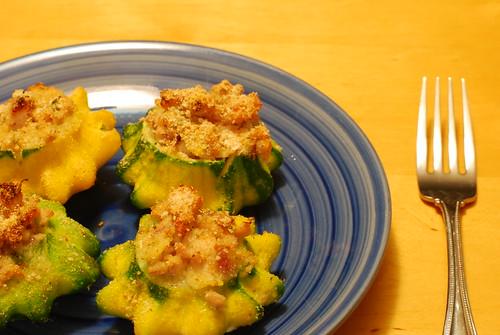
In contrast, a bluey twilight shot:
And then there’s my opinion about bokeh: it’s easy to go nuts the first time you have access to tools that can create it, but I recommend looking at each shot out of context post-edit to determine whether an uninformed observer would be able to identify the important items in the shot. If it looks like a nondescript blurry tan thing, you probably need to up the f-stop. I find my most useful shots come out around 3.8, which most standard lenses will accommodate, and will go lower when shooting something kind of ugly, like a casserole that tastes awesome, has beautiful ingredients, but looks like some kind of slurry when it comes out of the oven. Even then, though, I *may* go down to 2.4 or something, but rarely lower.
Behold, an ugly dish with a low f-stop to hide its utter lack of visual appeal:
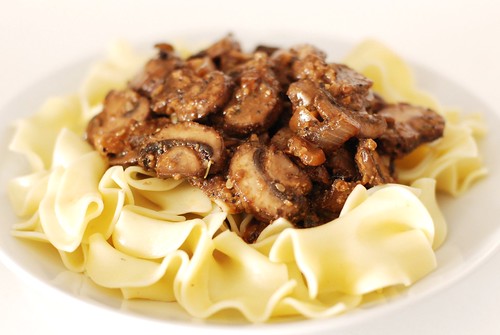
Also, I too fell victim to the siren-like song of bokeh early on. Can you tell what this is immediately, or do you have to kind of like, squint and think about it, or mouse over to see a caption?
(it’s chopped peaches)
So anyway, that’s a crash course in “how she done make all those pretty pictures.”
What revelations have made your photos 1000x better? Do you disagree with my aggressive insistence toward tripods? I’m willing to bet that there is someone who manages to take really awesome shots and has a totally different philosophy, but I also bet there’s no way he or she doesn’t measure white balance!
I’ll be adding particularly insightful comments to the end of this post because it really is meant to be more of a discussion than a declaration of beliefs. Here goes.
Nick from Macheesmo has the best advice anyone could ever offer to someone teaching themselves how to shoot:
I remember when I was learning how to use some of the manual settings on my camera… I just set an apple on a white plate and took probably 100 photos of it… changing one setting each time from the same place. It was interesting to see the different depth of fields in action… shutterspeed was a bit lost on me for awhile though due to the still-ness of my experiment (I learned shutterspeed while being frustrated trying to photograph a dog.)
Yes yes yes yes. Steal this idea. If you’ve been sitting on a nice camera for some time and still have no idea what to do with it, DO THIS. Your time will be well-rewarded. Practice makes perfect, and one of the only reasons my pictures are anything to look at is because I take no fewer than 100 shots for any one post. Over the course of 100 posts and literally 10,000 photos, you learn a lot about your toolbox.
Pumblechook makes a fine point, though I suspect his casseroles are routinely uglier than my own [insert winky face]:
I must digress on the issue of aperture. Personally, for most shots I like to keep it as low as is feasible because I’ve found it is much more forgiving in less than stellar lighting conditions. If I want certain areas to stay in focus I’ll just play around with the focus points, but thats just me. 🙂
G offers a perspective from a far more professional photographer than I am. I only wish I could get the shots she does with a point-and-shoot, but I leave the non-food photography to people with a better eye for that kind of thing.
i agree. It’s not the camera, it’s the photographer. I can get better pictures with a vintage crap box camera than i can get with an SLR. I’ve heard of many people whining that they need an SLR cos their point and shoot takes shit photos. And then “oh my SLR must be broken..the pictures aren’t goodâ€. Ummm yeah…because the camera can only do so much and really, there’s other factors that go into “good photographyâ€. So go ahead and buy that bulky camera and take crappy vacation pictures. it’s all the same to me. Ok vent over.
Still…a good point and shoot, if used properly can take the same beautiful pictures and SLR can take. I have both and i use them accordingly, depending on what i need and want to shoot.
You can see evidence of this philosophy in action on G’s gorgeous Etsy site: jiorji’s Garden Dub
Kim says:
I would love a fancy camera with manual settings and white balance settings (though maybe mine has them and I just don’t know how to use them), but honestly, I wouldn’t make good enough use of it. The food pictures on my blog aren’t amazing, but it’s not primarily a food blog, so I don’t care that much. 🙂
Kim is so right. If you just wanna take walkin’ around pictures, or don’t have a need for anything super sharp or detailed, or even if you’re taking pictures of big things like landscapes, save yourself a lot of money and buy a decent point-and-shoot. This is also the lighter option and if you lose or break it, you’re not out of commission for the months it can take to save up the money for a replacement.
Similarly, a few commenters lamented their “inferior” equipment, and yet they still had some great shots on Flickr and websites. Consider:
- PushEject (website: Wort-O-Matic)
Carlos brings up a good point, and while I shy away from defending my articles, I should point out that this wasn’t really meant to be an all-inclusive sort of thing . . . really, I was just focusing on the camera-specific details. I may address composition at another time, but there are so many food blogs out there to look to for ideas that (generally) people seem to know the difference from a good composition vs a less stellar one.
I started with a p&s too and if there was one thing I learned using a P&S, it was composition still is king of all skills. One cannot make-up for bad composition. (I think this component was overlooked in the article.)

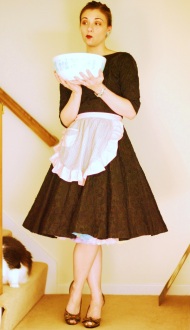

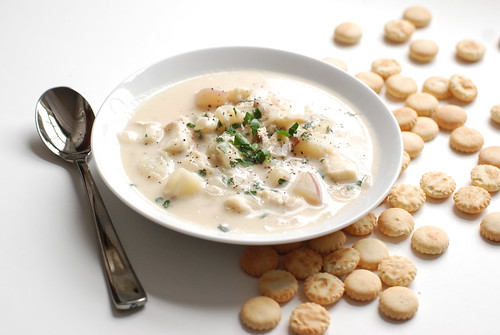
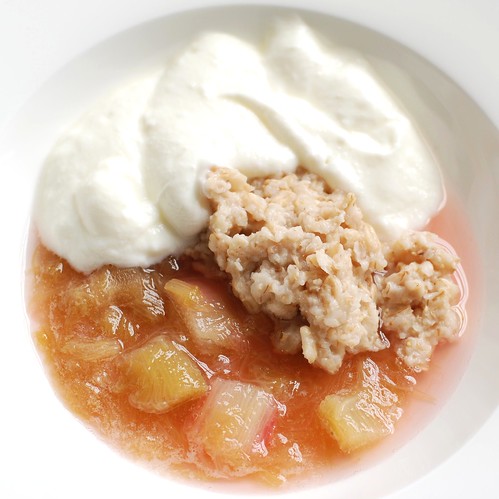
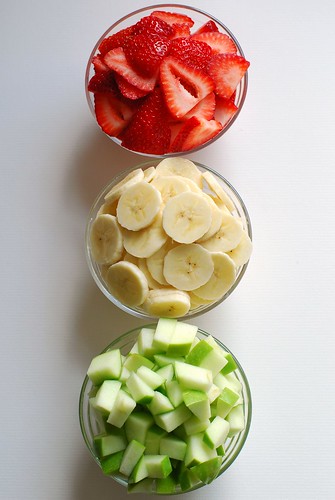
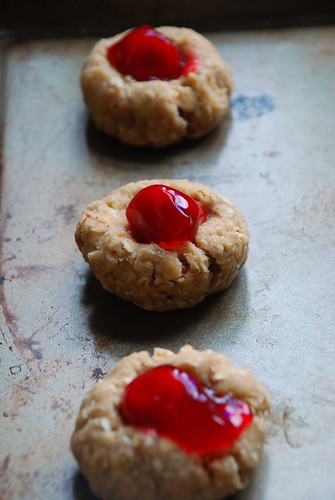
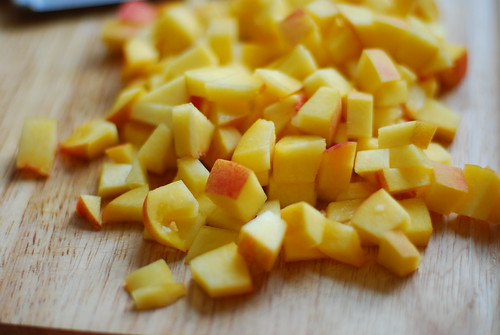
I use a nice little Canon PowerShot SD850 IS Digital Elph. It was the closest thing to the point and shoot that I had for years (until it died, after not being able to take decent pictures anywhere but outdoors in bright sunlight), and it usually works just fine. Indoors without flash? A teeny bit fuzzy, but usually ok. Indoors with flash? Sometimes whitewashed, usually ok. All other situations? Just fine for me.
I would love a fancy camera with manual settings and white balance settings (though maybe mine has them and I just don’t know how to use them), but honestly, I wouldn’t make good enough use of it. The food pictures on my blog aren’t amazing, but it’s not primarily a food blog, so I don’t care that much. 🙂
Thanks for the comments. I’m about to upgrade from my point and shoot to a SLR and am in drastic need of advice.
I ‘borrowed’ my mother’s Canon PowerShot A540 some time ago and never really gave it back. It’s not really the best for capturing food, but neither am I any sort of decent photographer. I will take your suggestions to heart, though, and see if I can’t rig up some kind of tripod. Fancy cameras are, sadly, still out of the common college-goer’s budget (and really, I’m so much of a klutz, I think I’d drop it as soon as it came out of the box).
Someday…someday…
Thanks for the informative post! As an amateur photographer and food lover and I love it when my favorite bloggers talk photography nerd so I can pick up tips. Especially about the white balance — I’ve never really experimented with that, but will have to give it a shot after your bit of white balance evangelism.
I have a Canon EOS 30D, and for me, my 50mm prime lens makes me look like a superstar, and is probably the biggest reason why some of my pictures turn out looking better than a $7 disposable. If I have any natural light at all it seems almost impossible to take a bad shot with this lens, even without a tripod. Besides set-up time, there really isn’t a drawback to using a tripod on still life, and unless you’re shooting with a $1000+ lens, I think a tripod is pretty necessary for the best shot.
But alas, I must digress on the issue of aperture. Personally, for most shots I like to keep it as low as is feasible because I’ve found it is much more forgiving in less than stellar lighting conditions. If I want certain areas to stay in focus I’ll just play around with the focus points, but thats just me. 🙂
“a good eye is better than the camera”
i agree. It’s not the camera, it’s the photographer. I can get better pictures with a vintage crap box camera than i can get with an SLR. I’ve heard of many people whining that they need an SLR cos their point and shoot takes shit photos. And then “oh my SLR must be broken..the pictures aren’t good”. Ummm yeah…because the camera can only do so much and really, there’s other factors that go into “good photography”. So go ahead and buy that bulky camera and take crappy vacation pictures. it’s all the same to me. Ok vent over.
Still…a good point and shoot, if used properly can take the same beautiful pictures and SLR can take. I have both and i use them accordingly, depending on what i need and want to shoot.
but i love how SLR makers bend over even more to make the bulky SLR appealing to even the most amateur of photographers…by adding all those silly little gimmicks to the camera, that really, mean nothing…like that colour selection, so that only red or blue is photographed and then everything else is BW. What is up with that? If you’re a good photographer, you don’t need that. It’s sillyness so that more people buy $1000 cameras.
ok vent part 2 over too.
basically, you need to keep in mind a LOT of other things if you want a good shot. A camera is nothing if you don’t know what you’re doing.
Well…you know where I got my camera from (GOD do I ever love it!), and I’m still learning how to use it, given that I’m almost entirely self taught. A friend who I’m learnng from looked at my photos and said ‘yeah, these are all in focus. your problem is camera shake.’ Ohhh. So he gave me a tripod, which (I’m hoping) will greatly improve my photos.
I have my eye on a 50 mm 1.4 or 1.8 just as soon as I can scratch up the dough. (For Christmas, it was either that or a KitchenAid stand mixer. I went with the mixer. Photography can wait. Good food can’t.)
We use the same lens! I’m in the Canon tribe, which we’ve discussed previously… but that lens kicks butt.
I remember when I was learning how to use some of the manual settings on my camera… I just set an apple on a white plate and took probably 100 photos of it… changing one setting each time from the same place. It was interesting to see the different depth of fields in action… shutterspeed was a bit lost on me for awhile though due to the still-ness of my experiment (I learned shutterspeed while being frustrated trying to photograph a dog.)
By far, the most important thing I learned through my apple experiment though… is white balance. Gotttaa get that right or learn how to correct for it in photoshop (which doesn’t always work).
I ADORE your photos, Aleta. Thanks for posting this. Can’t wait to get a DSLR of my own someday and put your tips to use!
Here’s me and my little point & shoot: http://www.flickr.com/photos/avcellshots
Cheers,
Push E.
I’m totally jealous. You see, I wish to have a digital rebel as my sister has one, and when I take pictures with it I can get amazing shots that I can’t get with my current camera (Kodak EasyShare Z712IS which can be found: http://www.google.com/products/catalog?q=Kodak+EasyShare+Z712IS&cid=5390014658474224767&sa=image#p). I am the type of person who takes two types of images ‘ random shots of something I want to place in my blog ‘ and ‘ photography shots ‘. I’d like to be able to do the random shots of something I want to place in my blog like your images look, but I don’t have the knowledge. I’m glad you did this blog, it showed me quite a bit.
Started with a D50. Currently using a D300. Now considering going to a D3s. Oh yes also bring a Canon G11 with me everywhere for when the right opportunity arrises. just recently got a Sigma 150mm 1:1 Macro. Hopefully my food photography will be better for it. Boy is photography a EXPENSIVE hobby.
THANK YOU for being the first ever blog post I have ever printed out. I need to follow these tips. I also have a Nikon D80 but it’s severely under-utilized. I come from the “I learned how to take photographs when I had to mix chemicals and work in the dark” set, and have taken my sweet time learning the digital ropes. I’ve grown tired of trial and error and need to get down to business. And now I need a better lens. ; )
a feast for the eyes – thank you for the lovely pics & the tips.
Great blog! My grandfather writes a food blog and he uses a Nikon Coolpix something or other. His readers are more interested in the descriptions than the pictures, I think. 🙂
I’m surprised nobody has mentioned it yet, but when it comes to product/food photography … tilt/shift movements are the key …
while i admit the 90mm/2.8 T/S lens is about $900 on miranda or such, it’s most certainly the key …
grantmichaels
Looks to me like I inspired a blog post 😉 Great post girl!
I agree wholeheartedly about a tripod. I use a Nikon D60 with a 50mm 1.8 and it is not autofocus (ARGH!) so you really have to line up the shot perfectly and focus it and then click away. I’ve even gone and bought a remote as well to absolutely eliminate blurry pictures. Now I can take awesome shots in super low light (as is the case for 6 months of the year here in my part of Canada).
I always use the white balance, with a white card though, works great for those shots in deficient lighting.
I think I will take your advice on using a 3.8 f stop though, I’m a little too keen on using higher f stops and getting blurry backgrounds, perhaps too blurry.
I’m still finding my way around my camera, and I get very frustrated with some dishes that I know in someone else’s hands would look beautiful, and when I photograph them they are just not right. I’m trying to be patient with myself and recognise that this is something that I need to learn to do well and that it’s not just going to happen. Thank you for the useful tips 🙂
While I agree that you don’t have to have a great camera to take great pictures…I have to say… after trying my brother’s brand new Cannon EOS 50D this weekend, I have to amend myself. The camera was such a pleasure to shoot with that I found myself taking more pictures. The focus time and the time between shots was so small that it was easy. The camera, despite being HUGE, was such a pleasure to shoot that even though my arms hurt, I didn’t want to stop.
I do use a point an shoot often, mostly because it is always there under foot. It’s my beater camera that is constantly at hand. The thing I find about the point and shoot is that I spend a lot of time fiddling. Especially with the amount of light it lets in. I have to move it up or down to get the right light, lock in the focus and then take the picture. I am still just starting out in photography so that may be some of it…but that fiddling means I can’t get as many shots in from as many angles. Perhaps what I really need is a good photography class.
It ain’t the meat it’s the motion.
I have to laugh at all these folks who know jack squat about visual design and how to fix a screw up. I bet that most can fix the mistake in the pan but not in the lens.
That being said can you see the QUALITY on the plate or is it just kind of there? Will dramatic lighting help it or is it just a plate that is a bore? Are there contrasting elements or is it a mud of the same hue?
So you know why depth of field is your friend?
TTFN
My question is…what kind of tripod do you use? I read somewhere that the tripod is actually pretty important, and a bad one does not help with getting sharp photos. Also do you use a remote? Supposedly that is important too. I’ve hesitated buying a tripod because I don’t know what type to get.
This is a great post with lots of useful advice.
I still need to learn a lot, although I found that with time i also learned how to see the objects and the light, reflections, etc.
I’m not Ii undesrtood what bokeh is… and I need to learn how to measure the white balance.
I’d love to read this post again a few more times and the comments. I’ll add your link to my next blog post so I have a reminder for it!
Hey Great article on food photography and camera. I do agree that cameras do not matter. I am using a D70s with 60mm 2.8 and I’m getting decent images. (Check out my blog or flickr at http://www.flickr.com/carlospalma) I do agree. WB is one of the most important aspects one has to pay attention to in food photography. As for bokeh, one does not need to be concerned about this. It may add a little bit of oomph to your photos but does not necessarily “make” the photo. I started with a p&s too and if there was one thing I learned using a P&S, it was composition still is king of all skills. One cannot make-up for bad composition. (I think this component was overlooked in the article.) I love this blog because it reminds me of the things I may have overlooked or forgotten!
How do you take pictures from above the food if you are using a tripod?
White balance?!? This is the solution to all of my ills! I photograph mostly crafts, food once in a while, but yeah, a tripod is a must. I’m able to get what you are calling bokeh with my Nikon Coolpix by using the macro setting. But for some reason, I skipped the whole white balance thing in learning how to take digital pics. My life has just improved 100%. Thanks!
(Here via Craft, fyi…)
Lots of wonderful advice and picture conversation, thank you. I have a point and shoot, will never have the braincells (mine are rapidly leaving me) or the budget, to utilise a good SLR. I have found Picasa to be idiot proof and quite handy for tweaking pictures, just a little. Other than that, try to remember the KISS principle. Keep It Simple, Stupid. Simple plates, simple backgrounds, uncluttered pictures. Its also helpful to view your subject from all angles, you may surprise yourself!
So sorry I didn’t check sooner — you’re right, the holidays were a freakin’ whirlwind! But I’m glad to see you’re back in blogging-action and with a cool Etsy store! Before the holidays I would have lamented over a little old point-and-shoot that I’ve been working with for almost a year, but Mr. Wasabi was so very kind to get me a grown-up camera, a Canon EOS 50D, along with several new lenses, although I prefer the macro for food. I have a tripod, which I don’t use as much as I should, but need to get a monopod. I tend to over and move a lot over the food to get shots. I also swap out the surface area the plates sit on; I have random stuff leftover from when we redid the house, like leftover bamboo stair material. Placemats and fabric swatches are fun, too. I tend to use appetizer plates or tea plates — the smaller the setup, the better photos I get. Bowls are tricky; i need to get a plain, shallow bistro bowl for soups and stews.
[…] Crafting Daily pointed out this discussion on photography. You’ll learn why white backgrounds are often better than colored, what time […]
i found this article extremely helpful, and am sad that it is totally unusable by me at the moment. I am food blogger, but only have time to cook at night 🙁
all my shots are that after dark fake light scenario, and i am perhaps guilty of overdressing my food. i will pay more attention to that idea at least, thank you!
i don’t tried to make my kids wait the sun came out so i could photo the gorgeous pot pie once, they tried to eat my arms off.
I simply couldn’t depart your website before suggesting that I really enjoyed the standard information an individual supply to your visitors? Is going to be again often to investigate cross-check new posts
[…] types of cameras […]
Add A Comment